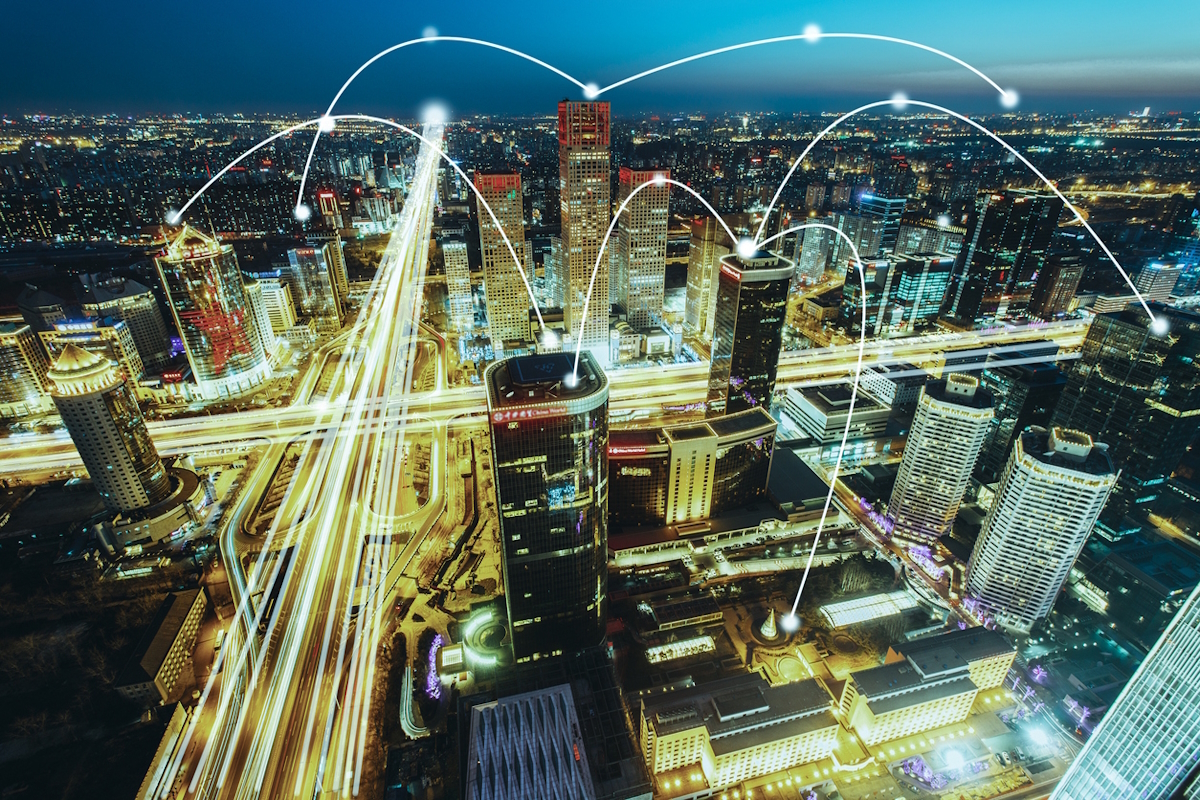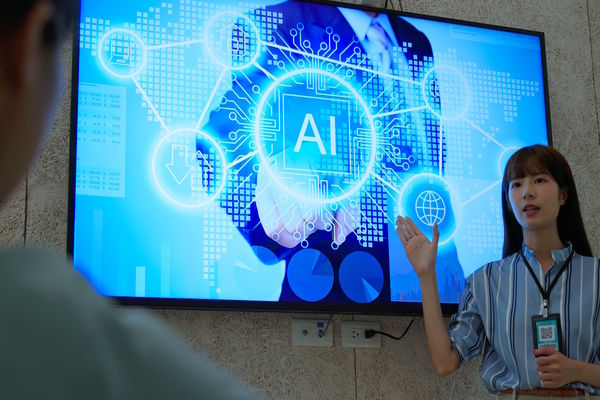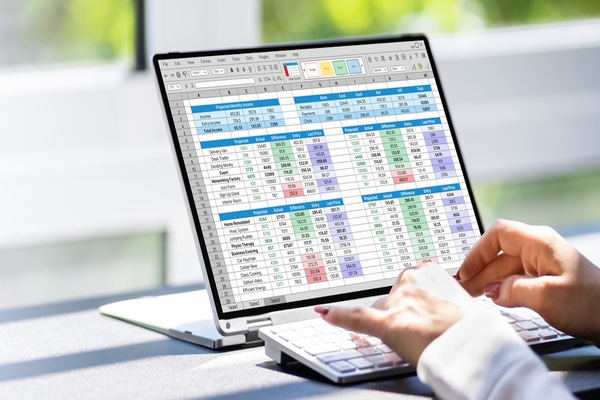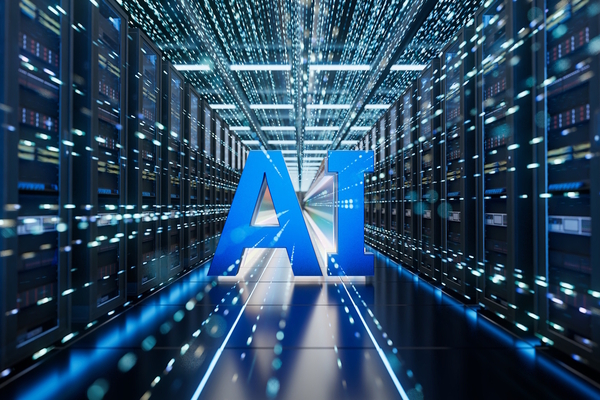The power of connected digital ecosystems

Caspar Herzberg at AVEVA argues that the connected ecosystem will be the catalyst for industrial growth
Having attended Hannover Messe and the World Economic Forum (WEF) in Davos, I have been reflecting on how these events strengthen partnerships across countries and sectors. Without collaboration, we simply wouldn’t get very far in business.
Industrial enterprises recognise that fact and are beginning to work together in mutually supportive ecosystems, creating integrated value chains that deliver a wide range of benefits.
A business ecosystem is an integrated, trusted network of organisations, partners, suppliers, customers and other entities such as regulators, that collaborate and interact within a particular industry or market. Each entity contributes to and relies on the success of others.
Where a single company would struggle to make any meaningful progress when it comes to optimising operational efficiency or increasing their sustainability, the ecosystem as a whole working together is better able to come up with innovative solutions and utilise data to drive transformation.
Top performers rely on business ecosystems
In fact, for entire business sectors—such as ridesharing, e-commerce or digital payment—success hinges on reciprocal cooperation.
Players within an integrated ecosystem benefit from economies of scale while driving sustainable outcomes and boosting innovation, flexibility and market agility.
Business ecosystems are strongly associated with success for top-performing companies, according to a PwC survey of 2,006 leaders from companies in the UK, US, Germany and Australia, with median revenues of more than $650 million in 2023.
These top performers make more than 60% of their money from ecosystems. They build future resilience by making business and technology investments that enable them to continue leveraging these influential networks.
Trusted data is the DNA of these new types of business ecosystems, and interoperability is their lifeblood. The industry is clearly moving in this direction, with 43% of executives at industrial companies believing that a secure data sharing and collaboration platform has the greatest potential to drive opportunity for their business over the next 12 months, according to AVEVA’s Industrial Intelligence Index.
Connected data creates a digital source of truth
As early movers are demonstrating, interlinking data across organisations and value chains enables cross-structural teams to collaborate around a single—and live—digital source of truth. When hosted in the cloud, such a federated approach gives each entity oversight of its own information alongside a clear understanding of the entire picture—all in real-time.
Additionally, advancements in AI are enabling organisations to sort through the data and access the key insights much faster, driving increased value.
Think of it as the democratisation of industrial intelligence. Armed with the right intelligence, players across the ecosystem can make quick, evidence-based decisions to maximise new opportunities and enhance sustainability. This will be vital as the world moves towards Industry 5.0 - an industrial economy which uses technology to move towards a more sustainable and human centred world.
In capital projects, for example, this kind of trusted, unified system built around a digital twin enables engineers across disciplines to work in parallel from a single database. All documents and models are automatically updated when changes are made. This enables better collaboration across teams and ensures greater efficiency of engineering efforts during the design phase.
Greater competitive advantages will arise from infusing artificial intelligence (AI) across the system. Not only do predictive and prescriptive analytics offer the ability to trial new concepts and forecast potential outcomes in granular detail, but AI algorithms can also drive continuous improvement iteratively, ensuring that products and services evolve in anticipation of customer expectations and evolving environmental, social and governance (ESG) regulations.
Sustainability through ecosystem thinking
Sharing the data across an ecosystem ensures that the entire chain can be optimised. With cloud data-sharing, organisations are able to identify small inefficiencies across the industrial process in order to ensure optimal resource usage and reduce their carbon footprint. Viewing data on such a large scale enables stakeholders to use those insights to determine where sustainability action can have the greatest impact.
With every player able to recalibrate in real time as data insights are revealed, small incremental gains accumulate over time to create momentum that drives both sustainability and revenue gains. This could be as simple as turning off certain machines whilst they are not being used or consolidating production to use the least amount of energy.
Ultimately, utilising software to share information with partners, customers and suppliers enables enterprises to operate more efficiently and engineer more sustainably.
Real-time energy data unlocks new revenues
In California, the energy consulting firm ZGlobal and its partner Silicon Valley Clean Energy created a data-sharing ecosystem using our technology. From power producers to purchasers, schedulers, suppliers and customers, each authorised stakeholder benefits from a holistic view of the value chain, with enhanced energy transparency, traceability and system-wide security. Thousands of dollars are saved in terms of power purchases while the companies accelerate North America’s low-carbon energy transition.
This kind of integrated ecosystem thinking, in which stakeholders share industrial intelligence, is already enabling industry leaders to unlock 10% higher profitability, 3 times return on investment and up to 20% higher sustainability performance, data shows.
What’s more, data-sharing communities provide organisations with both the data sources and the added context needed to allow them to fast track research & development and work together to increase innovation, leading to mutually advantageous competitive advantages.
Embracing Industry 5.0
As we transition to Industry 5.0, connected ecosystems will play a pivotal role. This new frontier moves beyond the automation focus of Industry 4.0, emphasising human-machine collaboration and sustainability. Industry 5.0 aims to harness technology to create environmentally cognisant industrial systems characterised by efficiency, resilience and deeply integrated artificial intelligence and human intellect.
Problems into prospects
Industrial enterprises will need to contend with growing operating complexity, from stricter sustainability targets to continued manpower shortages, supply chain interruptions, and rising prices.
In business, trust has become more important than ever. By offering transparency, consistency and accountability, unified digital insights support collective and sustainable growth for every connected entity, and problems turn into prospects.
Connected industrial ecosystems will support sustainable economic growth over the next decade. They’re exactly what we need with the dawn of Industry 5.0, where robots and intelligent machines work alongside humans towards resilient, sustainable outcomes for society as a whole.
The future of industry is collaborative, adaptive and human-centric — powered by the transformative nature of ecosystem thinking.
Caspar Herzberg is CEO of AVEVA
Main image courtesy of iStockPhoto.com and dk1234

Business Reporter Team
Most Viewed
Winston House, 3rd Floor, Units 306-309, 2-4 Dollis Park, London, N3 1HF
23-29 Hendon Lane, London, N3 1RT
020 8349 4363
© 2025, Lyonsdown Limited. Business Reporter® is a registered trademark of Lyonsdown Ltd. VAT registration number: 830519543





